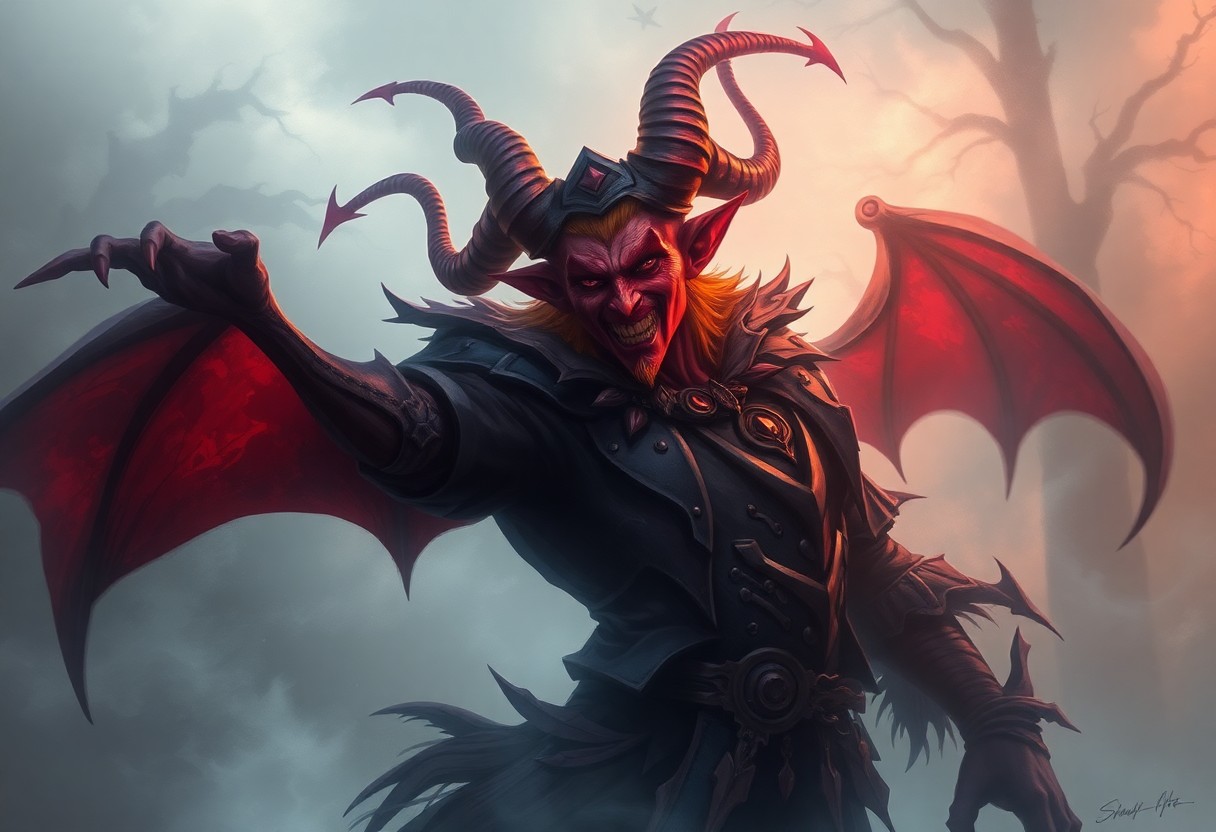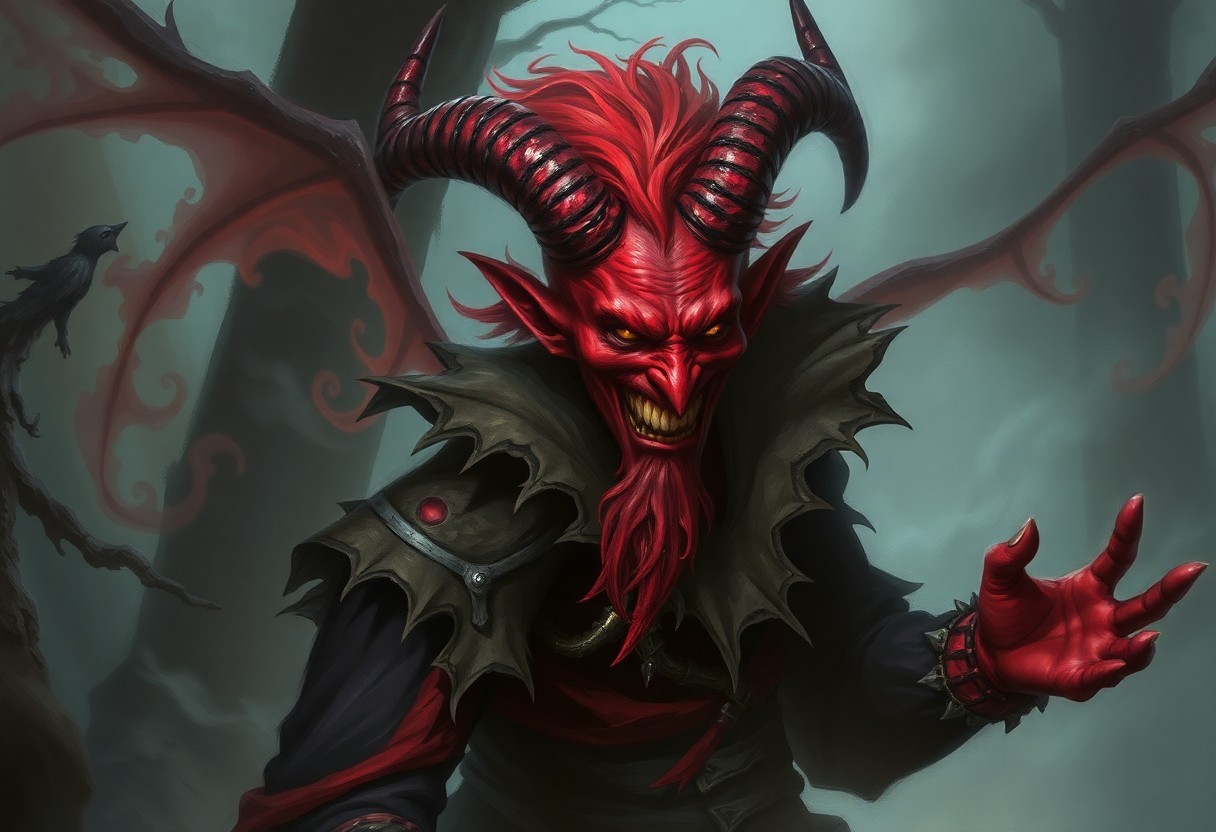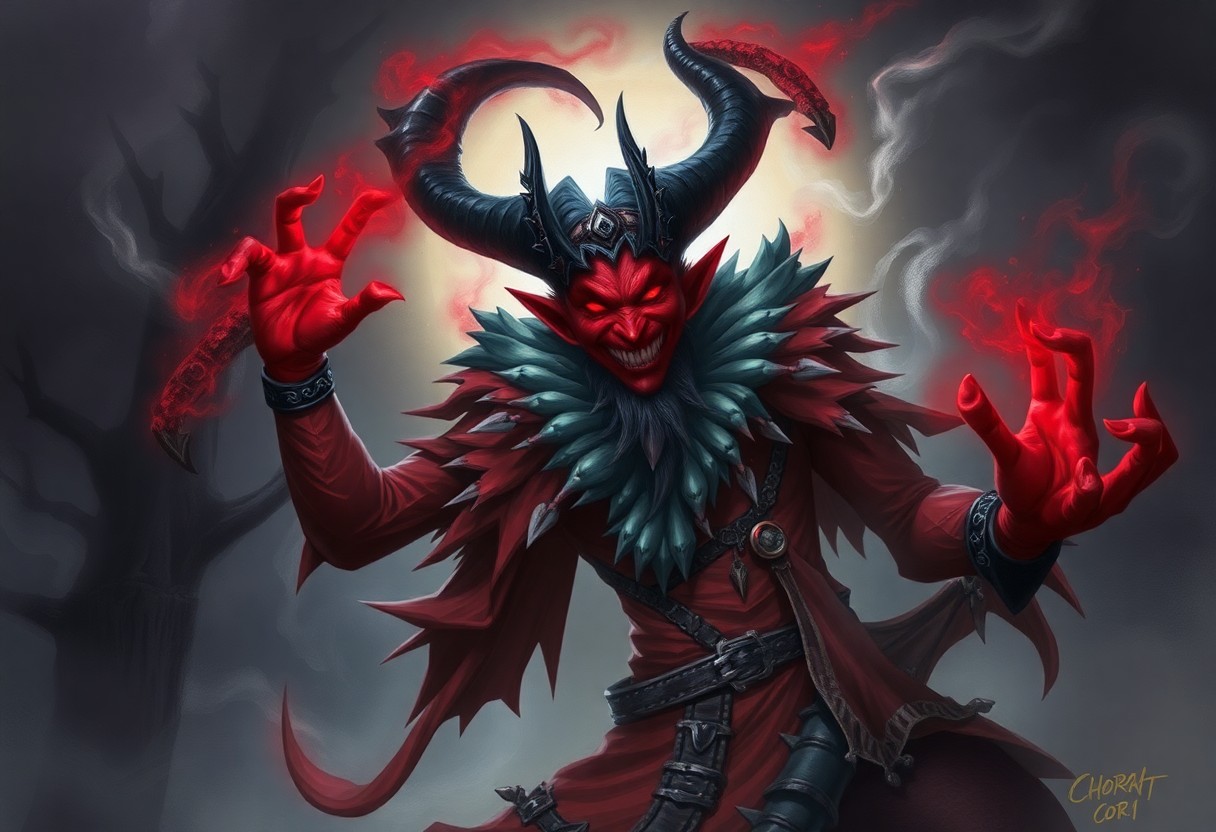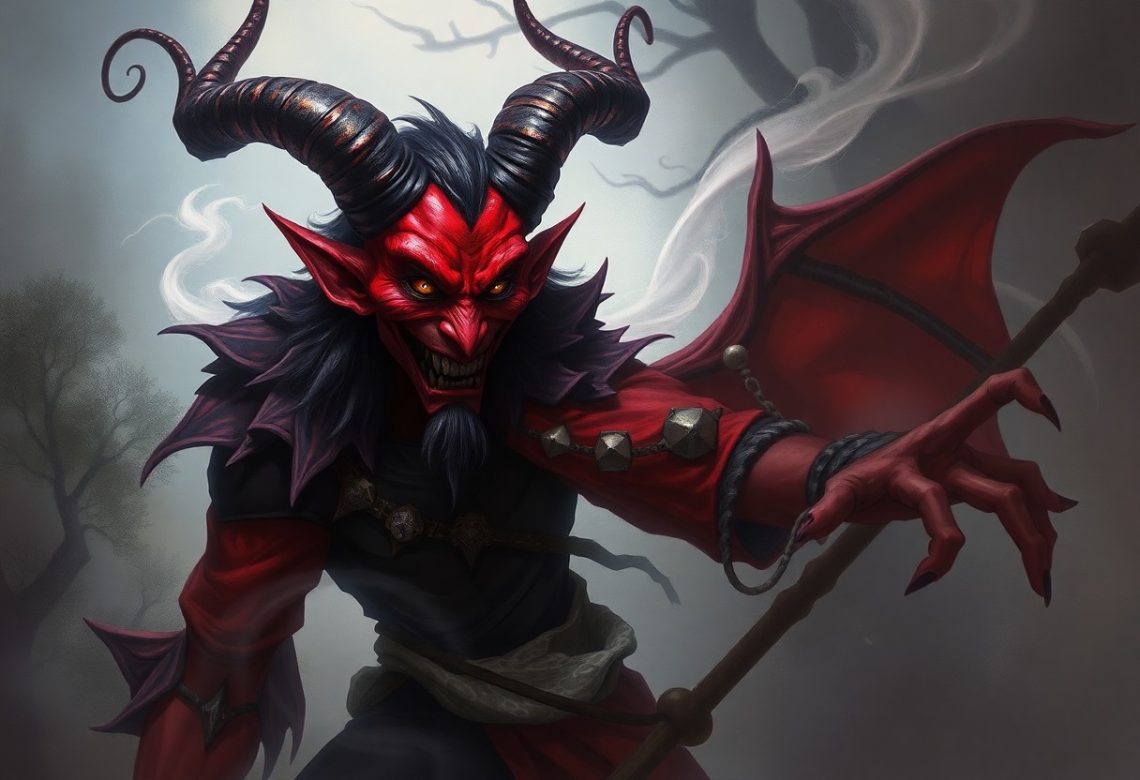There’s a mysterious figure in Slavic folklore that captivates the imagination: Chort, the devilish trickster spirit. As you research into the world of Chort, you’ll uncover a rich tapestry of stories that blend mischief and malevolence, revealing the duality of this enigmatic character. Known for both his cunning and his ability to outsmart even the wisest, Chort serves as a fascinating reminder of the balance between good and evil in folklore. Join me in exploring the intricate lore surrounding Chort and discover how this trickster spirit has woven himself into the cultural fabric of the Slavic world.
Origins of Chort
Before delving into the lore of Chort, it’s necessary to understand where this enigmatic spirit originates from. Rooted in Slavic mythology, Chort embodies the essence of mischief and cunning, often depicted as a devilish trickster. Your exploration of Chort’s origins will unravel a rich tapestry woven from ancient beliefs, reflecting both the fears and reverence that medieval communities held toward the supernatural. This spirit is more than just a character; it represents the world’s duality of good and evil.
Historical Roots
Any discussion about Chort would be incomplete without acknowledging its historical roots. Emerging from Slavic folklore, Chort has been a symbol of the chaotic forces of nature and the human psyche. Folklorists have traced appearances of this trickster back to pre-Christian times, where he often took on roles that highlighted the complexities of moral decision-making. By understanding these roots, you can better appreciate how Chort weaves into the narratives of Slavic identity.
Cultural Significance
Beside historical roots, Chort holds immense cultural significance in Slavic societies. This trickster spirit is often portrayed in tales as both a villain and a teacher, presenting invaluable lessons about cleverness and resilience. You will notice that the character of Chort serves as a reminder of the importance of wit in facing challenges, highlighting the notion that every struggle has a lesson behind it.
Another aspect of Chort’s cultural significance lies in the duality of your perception of evil. While Chort embodies chaos and mischief, he also encourages humans to confront their darker sides with humor and ingenuity. In literature and art, you may find Chort representing the conflict within oneself, bringing forth themes of redemption and transformation. This reflection on human behavior deepens your understanding of moral dilemmas and the role of cunning in overcoming life’s challenges.
Characteristics of Chort
Some of the defining characteristics of Chort make him a captivating figure in folklore. His dual nature as both a trickster and a spirit grants him an unpredictable essence that can enchant as easily as it can deceive you. Known for his connection to mischief, Chort often embodies the darker sides of human behavior, reflecting both the fears and temptations that dwell within you. This blend of charm and malevolence allows Chort to navigate between the realms of the seen and unseen, making him a fascinating subject of study.
Appearance and Symbols
Symbols associated with Chort often include a pitchfork, representing the devil’s connection to fire and chaos, along with various animal motifs that signify his cunning nature. Conceived as a darkly mischievous figure, Chort may appear in various shapes, from a monstrous being to an innocuous creature, embodying the unpredictable essence of trickery itself. You may also notice attributes of shadows or flame, underscoring his nature as a spirit that thrives in the twilight between light and darkness.
Personality Traits
After examining Chort’s personality traits, it becomes clear that he is a master of deception. You will find that he thrives on chaos and mischief, often delighting in the confusion and frustration of others. His unpredictable nature can make him both a companion and a foe, as he enjoys playing elaborate tricks that reflect your deepest fears or desires. Chort often invites you to question your understanding of morality, leading you to confront the duality within yourself.
Due to his playful yet sinister demeanor, Chort’s interactions can shift rapidly, offering sharp lessons on human folly and the nature of ambition. He embodies the darker aspects of creativity and cunning, prompting you to acknowledge the thin line that separates fun from malevolence. Engaging with Chort allows you to explore your boundaries, as he nudges you toward self-reflection while keeping you on your toes with his pranks and riddles.

Chort in Folklore
Any discussion about the Chort inevitably leads to its deep roots in Slavic folklore, where this mischievous spirit embodies chaos and trickery. Often portrayed as a hooved creature, the Chort serves as both a harbinger of misfortune and a source of amusement. Its antics typically target those who take life too seriously, reminding you of the thin line between pleasure and peril in the world of spirits.
Legends and Stories
Above all, the tales surrounding the Chort illustrate its dualistic nature—both playful and enigmatic. One legend tells of a farmer who, after teasing the spirit, found his crops flourishing, only to be met with comically disastrous consequences for his arrogance. These stories resonate with the lessons of humility and caution, urging you to tread lightly when dealing with forces beyond your understanding.
Variations Across Cultures
After exploring the Slavic depiction of the Chort, you will find that similar trickster spirits exist in various cultures, each embodying unique characteristics and tales. For example, the Coyote in Native American lore shares the Chort’s cunning nature, while the Scandinavian trolls evoke a similar sense of mischief and chaos.
And, when you consider these variations, it becomes apparent that the essence of trickster spirits transcends cultural boundaries. Whether it’s the Japanese kitsune, known for its magical abilities, or the African Anansi, the spider trickster, each serves as a reminder of the unpredictability of life and the wisdom gained through playful challenges. This thematic richness broadens your understanding of how societies perceive mischief and its role in moral teachings, reinforcing how integral these spirits are to human storytelling across the globe.

Chort’s Role in Modern Culture
Once again, you may find Chort manifesting in various aspects of modern culture, captivating your imagination with its intriguing blend of playfulness and mischief. Many contemporary interpretations resurrect this devilish trickster spirit, reflecting your fascination with folklore and the complexities of human nature. As you navigate the cultural landscape, you’ll see Chort’s influence popping up in literature, entertainment, and even as a symbol of resistance against societal norms.
Representation in Arts and Media
Among the countless artistic representations and media portrayals, Chort often appears as a whimsical character in stories, films, and visual arts. You might notice that creators use this trickster figure to challenge the mundane and provoke thought, inviting you to engage with deeper themes of chaos and order. This modern framing allows you to explore your own beliefs and values in light of Chort’s unconventional antics.
Influence on Contemporary Beliefs
Behind the charm and mischief of Chort lies a complex legacy that influences modern beliefs, allowing you to consider the duality of good and evil. This spirit embodies human contradictions, reminding you that humor can coexist with darkness, reflecting the complexities of life.
It’s fascinating how the character of Chort resonates with contemporary beliefs about morality and ethics. As you engage with discussions surrounding the nature of right and wrong, Chort’s antics challenge your perceptions. You may find that its trickster behavior reflects your own struggles with societal expectations and personal freedoms, pushing you to question what defines virtue in an ever-changing world. Through this lens, Chort serves not just as a figure of folklore but as a catalyst for introspection and dialogue about your moral landscape.
Chort and Human Interaction
Keep in mind that the Chort, as a trickster spirit, often interacts with humans in ways that can be both amusing and unsettling. These interactions can manifest during everyday activities, where Chorts might play tricks that leave you bewildered, or during significant life events, where their presence underscores the thin boundary between the mundane and the supernatural. Understanding these encounters is key to navigating your relationship with this elusive spirit.
Rituals and Offerings
On certain occasions, you may wish to engage with the Chort through rituals and offerings. Traditionally, these practices could involve leaving small tokens of appreciation like food or drink, which are believed to placate and entice the Chort. This act is not only a gesture of respect but also an invitation for the spirit to share its luck or guidance with you.
Tales of Encounters
Against the backdrop of folklore, tales of encounters with Chorts are rich with humor and cautionary lessons. Many individuals recount experiences that suddenly turned odd or inexplicable, often leading to unexpected transformations in their daily lives or perspectives. These stories serve as both entertainment and a warning, suggesting you take the Chort’s trickery seriously while finding joy in its chaos.
To understand the depth of these tales, it’s important to engage with them as reflections of human nature and the unpredictable essence of life. Each story often reveals an aspect of your own character or a life lesson that you can apply. The common thread among these encounters is the need for humility and adaptability; the Chort’s unpredictable antics spark both laughter and deep thought, encouraging you to embrace the whimsy and uncertainty of your existence.

Lessons from Chort
Many cultures recount tales of Chort, the devilish trickster spirit who embodies mischief and cunning. From these stories, you can gain valuable insights into navigating the complexities of human nature and society. By reflecting on Chort’s antics, you become more aware of how humor and wit can serve as tools for coping with adversity. Additionally, you learn that the unexpected twists in life can hold deep lessons, encouraging you to embrace spontaneity and adaptability in your own journey.
Moral and Ethical Reflections
Reflections on Chort’s tales lead you to ponder the moral lessons woven within them. His trickery often unveils the folly and greed of humanity, prompting you to evaluate your own values. By considering the consequences of mischief and deceit, you gain insights into ethical behavior and the importance of integrity. Through Chort’s experiences, you can discern how humor and cleverness, when used in moderation, might enhance your interactions while still fostering a sense of responsibility.
The Duality of Nature
Duality is a prominent theme in Chort’s stories, revealing the inherent contradictions within life and human nature. You may find yourself contemplating the balance between light and dark, good and evil, and how they coexist within each individual. Chort invites you to embrace this duality, recognizing that your own nature encompasses both playful mischief and profound reflection.
Understanding this duality allows you to navigate life’s challenges with a more nuanced perspective. Chort exemplifies not only the trickster spirit but also the necessity of embracing both sides of your nature. You learn that acknowledging your flaws and virtues fosters personal growth and encourages empathy towards others. By appreciating the complexity of existence, you cultivate a deeper awareness of your actions and their impact on those around you.
To wrap up
From above, you can see that Chort, the devilish trickster spirit, embodies the complexities of folklore and human nature. By exploring this enigmatic figure, you gain insight into the interplay between chaos and morality within your own experiences. Understanding Chort’s role in tales and beliefs allows you to appreciate the nuances of cultural narratives and their reflections on human behavior. As you explore into these legends, consider how they resonate with your own journey and the lessons they may offer in navigating life’s challenges.





